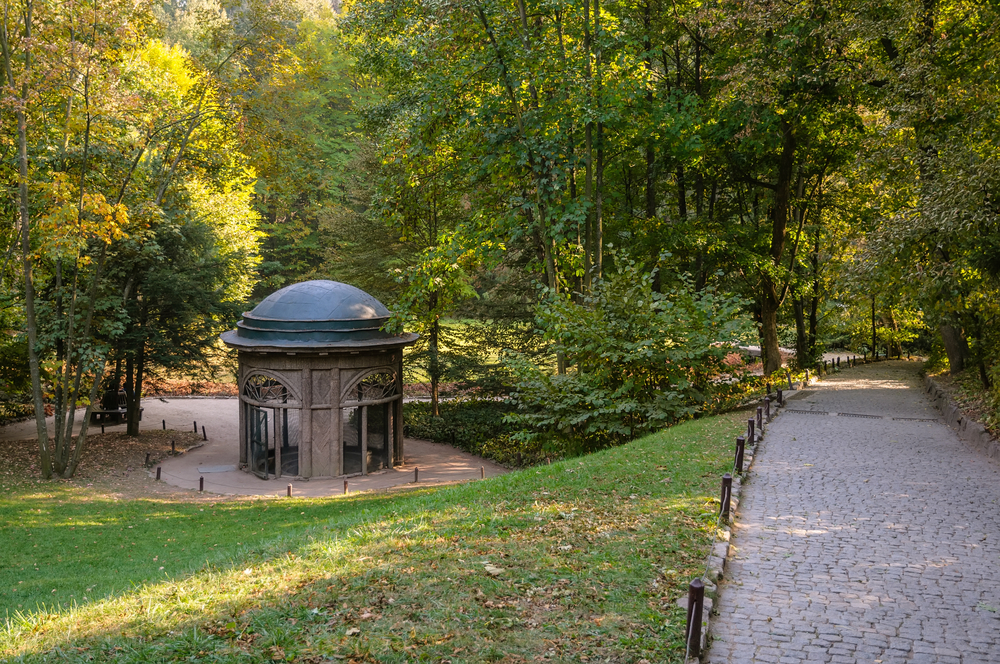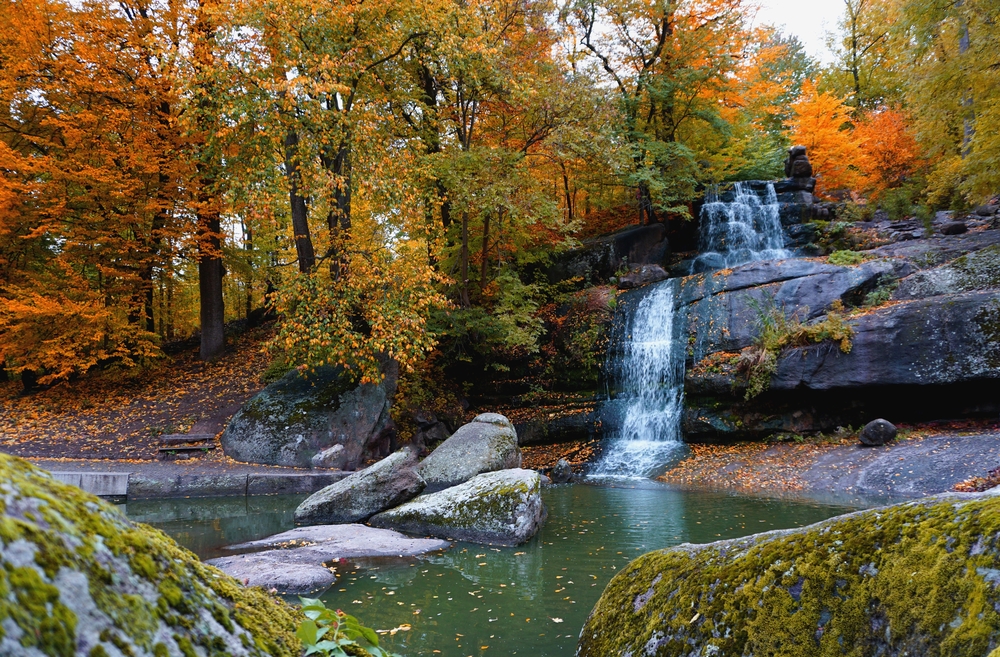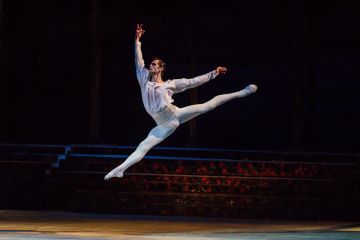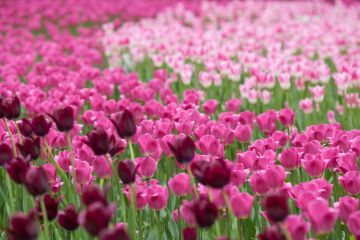Tainted Love
Love often has mysterious ways of finding its way into our hearts. It is true for ‘high’ and ‘low’, as reflected in the love story of Count Stanisław Potocki and a Polish noble Sofia Witt, which eventually led to the building of the beautiful Sofiyivsky Park in Uman. Even centuries later, Sofia’s personality is still wrapped in a veil of mystery: there are at least two versions of her origin and early life, both of them agreeing however that she climbed her way on top.
According to the more popular historical version, Sofia Clavone was born in 1760 in a Turkish city Bursa. Her family was quite poor — father was a Greek cattle merchant, who didn’t earn enough money to let them live a carefree life. Sofia’s father died and her mother was forced to marry another man, who then died in mysterious circumstances as well. Their house was destroyed in the great fire of Constantinople, and the family was left with nothing. Shockingly, her mother then resolved to sell Sofia and her sister to a Polish Ambassador Boskamp-Lyasopolsky, who upon seeing the girl’s beauty taught her French and court manners. In 1779, commander of the famous Kamianets-Podilskyi castle in Ukraine Józef Witt married Sofia, and the couple soon left for Europe. Sofia Witt managed to charm the noblest people from Marie Antoinette to King of Prussia Frederick II.
She was reportedly working as a Russian agent during the Russian-Turkish war of 1787–92, successfully managing the whole network of spies.
Read: Kamianets-Podilskyi Castle in Ukraine
Nothing could have predicted what happened next: in 1796, Sofia arrived in Uman, Ukraine, and filed for divorce with Jozef De Witte. The reason behind the act was a passionate romance that sparked with Polish military commander Stanisław Potocki, who at the time had a family of his own. After leaving past in the past and getting divorce papers, the newlyweds started living together. Potocki was incredibly charmed by the beauty and wit of his wife and seeing she missed the landscapes of her homeland, ordered to build a landscape park to cheer up his beloved one. “To Sofia from her love” was carved on one of the columns at the park’s entrance according to the count’s orders. The park was soon given its usual name Ukrainians know nowadays — Sofiyivka.
The park’s early days
15 million Polish zlotys were allocated for the construction of the park. In 1796, the works began under the guidance of Ludwik Metzell, a Polish officer and military engineer. He made sure to implement elements of the ageless Greek poems Odyssey and Iliad by Homer in the park’s décor. 800 serfs worked hard to dig up the lakes, underground rivers, and granite grottoes. Luckily, we can still marvel at some of them today: from Calypso and Venus grottoes to the Lefkada rock and Belvedere observation deck. Metzell fervently kept to the Greek mythology, giving the park its own Styx River.
One of the most well known cultural landmarks in Ukraine was built on a treeless terrain, which meant that in order to fill the territory with greens, Potocki had to invite a specialist. For this purpose, Metzell hired a gardener from Germany, who made sure the exotic plants planted in the park would survive Ukrainian weather. Luckily, the park’s flora wonders like tulip tree or Babylonian willow can still be observed today. Incredible for the time engineering works were also led by Metzell: water system in Sophia park was completely autonomous and didn’t need any pumps. Two lakes, as well as the Grand Waterfall, were finished, and soon workers were pressed for time — deadline was close.
In May 1802, Stanisław Potocki presented Sofiyivsky Park to his wife as a birthday present. The day was filled with festiveness: Stanisław Trembecki, a renowned Polish poet, praised the park’s beauty in the poem he wrote for the opening ceremony. The day ended with a grand performance with fireworks on the park’s central square. Sofia was brimming with joy and all were well.
Sofia’s legacy 
According to historical data, during the late years of life, count Potocki became involved with mysticism and Polish Illuminati. Some put the blame of his death in 1805 on this interest. Sofia, shocked by the sudden news — after all, her husband disappeared without saying goodbye — had become a widow in mere three years after celebrating the wonderful holiday with her husband. Sofia dedicated the rest of her life to upbringing her beloved children: sons Alexander, Mieczyslaw and Boleslaw, and two daughters, Sophia, and Olga.
During the 1820s, Sofia’s health deteriorated, and sensing her upcoming death she instructed to be buried in Uman — one of the oldest and most mysterious cities in Ukraine. Aleksander Potocki inherited the park, but due to his support of 1830-1831 Polish uprising, all mansions and lands of the family were confiscated, and Sofiyivsky Park became “Tsarytsyn Park” as a present for the Russian Empress Alexandra Feodorovna, wife of Nikolai I.
Read: Ukrainian Castles Worth Visiting
Thus began the second stage of construction works: Muse Terrace, Chinese and the famous Mushroom gazebo appeared at the time. After the 1917 revolution, the park gained the status of a National Reserve and was carefully renovated after the WWII. The winter of 1979-1980 became almost fatal for the park: the cold killed countless plants, and abundant melted snow caused a huge flood that ruined many décor elements, as well as alleys.
Luckily, in 1991 Sofiyivsky Park became a research area of National Academy of Sciences of Ukraine and ever since had been carefully preserved and regularly renovated. It is now named one of the Seven Wonders of Ukraine and attracts millions of tourists every year, especially in autumn when the golden leaves falling from numerous trees cover long winding alleys.
Attractions 
Without a doubt, Sofia Park isn’t regarded as one of the best places to visit in Ukraine for nothing — delicate Greek statues, an abundance of nature, romantic atmosphere and incredible sights for the photographs make it an often visited spot. Tourists mostly prefer to stay in a hotel in Uman, to explore the city and enjoy the Park’s wonders without rush. Now, let’s see what is worth paying extra attention. The Geneva Lake, created in the 1930s, is certainly worth stopping by.
Firstly, the view and fresh water make it a perfect place to contemplate nature and take breathtaking pictures. Secondly, the famous Mushroom gazebo, built in 1841 can be accessed on the glade of the lake. Between Main Entrance and Taypersk Rock visitors have a chance to stroll along the Small Switzerland — an alley of cypresses and pine trees, planted way back in 1891. The Flore Pavilion is neighboring Silver Sources, a natural spring with antique décor. The central part of Sofiyivsky Park is full of scenes reminding of Greek and Roman mythology. Especially beloved by visitors are the statues of Hermes and Venus that can be found in the area of Thunder grotto.
Read: Kosoy Kaponir Fortress in Kyiv
Finally, those who wandered the park long enough are rewarded with the access to one of the first constructions in the park, done during the Potocki reign: Loketek and Nut grottoes. Individual or group excursions, giving a more detailed history of the park in English, are available all year long.
One of the most popular attractions here is an excursion on the underground river Styx, which allows the brave wanderers to cross the dark river on the boat, just like in the Greek myth about Charon.
Sofiyivsky Park is officially opened for visitors from April 12 to November 15, 9 A.M. to 6 P.M.
Photo sources: shutterstock.com, wyborcza.pl. All images belong to their rightful authors.
Sofiyivsky Park in Uman: Love Story
One of the most-visited landmarks in Ukraine, Sofiyivsky Park isn't merely just a beautiful and peaceful place, which boasts of abundant greens and incredible architecture. History of the park is just as intriguing – after all, the park appeared due to a passionate romance between Сount Potocki and Sofia Potocka. Let's find out more about its past and what you can see there nowadays.







